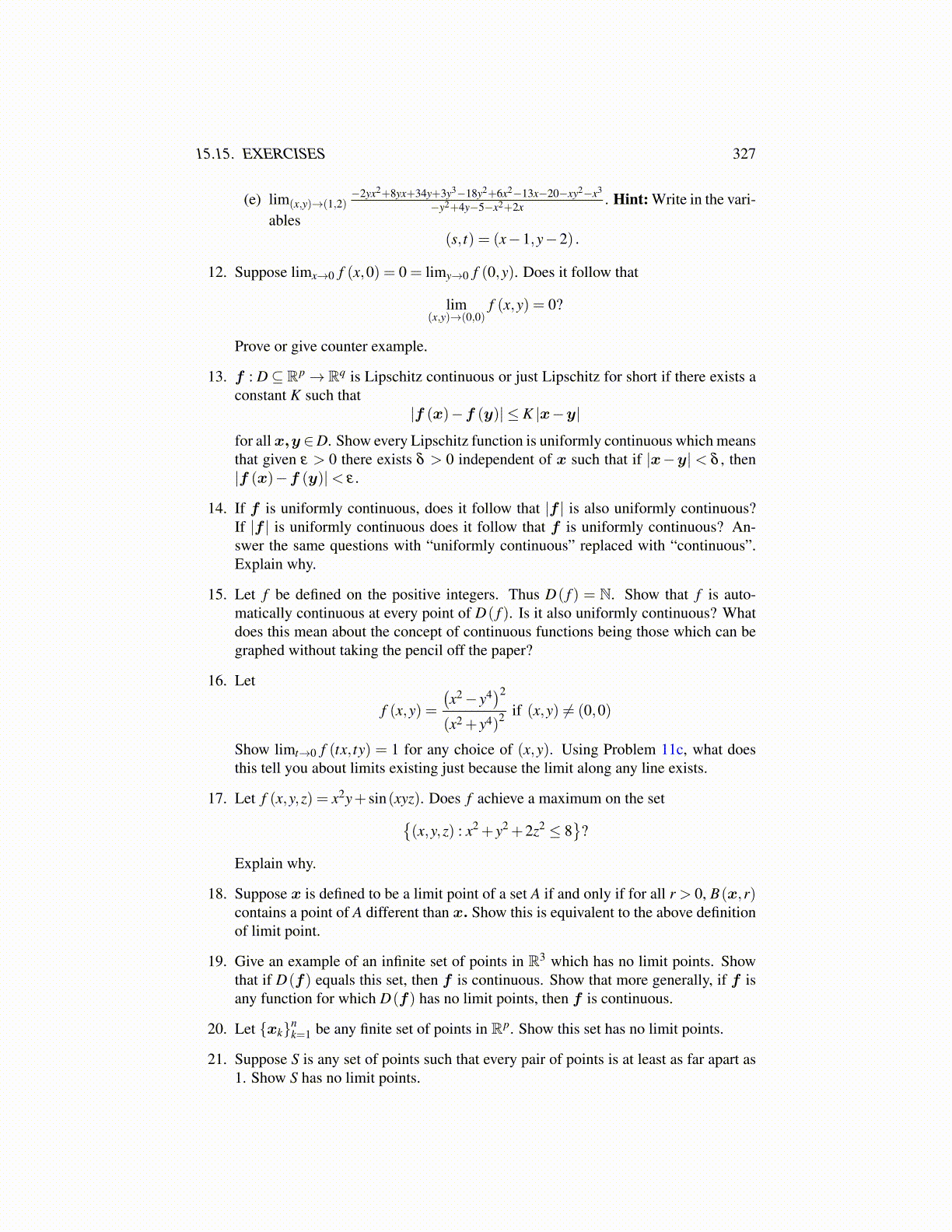
15.15. EXERCISES 327
(e) lim(x,y)→(1,2)−2yx2+8yx+34y+3y3−18y2+6x2−13x−20−xy2−x3
−y2+4y−5−x2+2x . Hint: Write in the vari-ables
(s, t) = (x−1,y−2) .
12. Suppose limx→0 f (x,0) = 0 = limy→0 f (0,y). Does it follow that
lim(x,y)→(0,0)
f (x,y) = 0?
Prove or give counter example.
13. f : D ⊆ Rp → Rq is Lipschitz continuous or just Lipschitz for short if there exists aconstant K such that
|f (x)−f (y)| ≤ K |x−y|
for all x,y ∈D. Show every Lipschitz function is uniformly continuous which meansthat given ε > 0 there exists δ > 0 independent of x such that if |x−y| < δ , then|f (x)−f (y)|< ε .
14. If f is uniformly continuous, does it follow that |f | is also uniformly continuous?If |f | is uniformly continuous does it follow that f is uniformly continuous? An-swer the same questions with “uniformly continuous” replaced with “continuous”.Explain why.
15. Let f be defined on the positive integers. Thus D( f ) = N. Show that f is auto-matically continuous at every point of D( f ). Is it also uniformly continuous? Whatdoes this mean about the concept of continuous functions being those which can begraphed without taking the pencil off the paper?
16. Let
f (x,y) =
(x2 − y4
)2
(x2 + y4)2 if (x,y) ̸= (0,0)
Show limt→0 f (tx, ty) = 1 for any choice of (x,y). Using Problem 11c, what doesthis tell you about limits existing just because the limit along any line exists.
17. Let f (x,y,z) = x2y+ sin(xyz). Does f achieve a maximum on the set{(x,y,z) : x2 + y2 +2z2 ≤ 8
}?
Explain why.
18. Suppose x is defined to be a limit point of a set A if and only if for all r > 0, B(x,r)contains a point of A different than x. Show this is equivalent to the above definitionof limit point.
19. Give an example of an infinite set of points in R3 which has no limit points. Showthat if D(f) equals this set, then f is continuous. Show that more generally, if f isany function for which D(f) has no limit points, then f is continuous.
20. Let {xk}nk=1 be any finite set of points in Rp. Show this set has no limit points.
21. Suppose S is any set of points such that every pair of points is at least as far apart as1. Show S has no limit points.